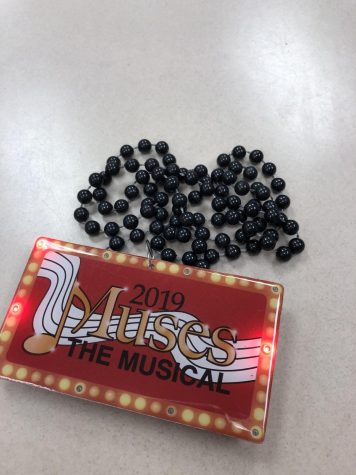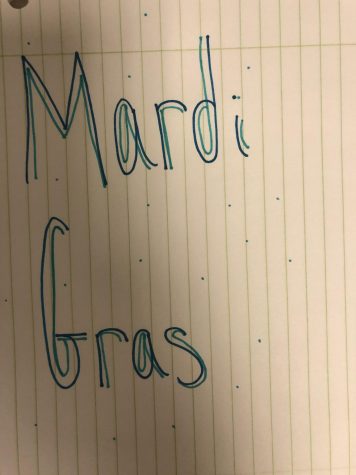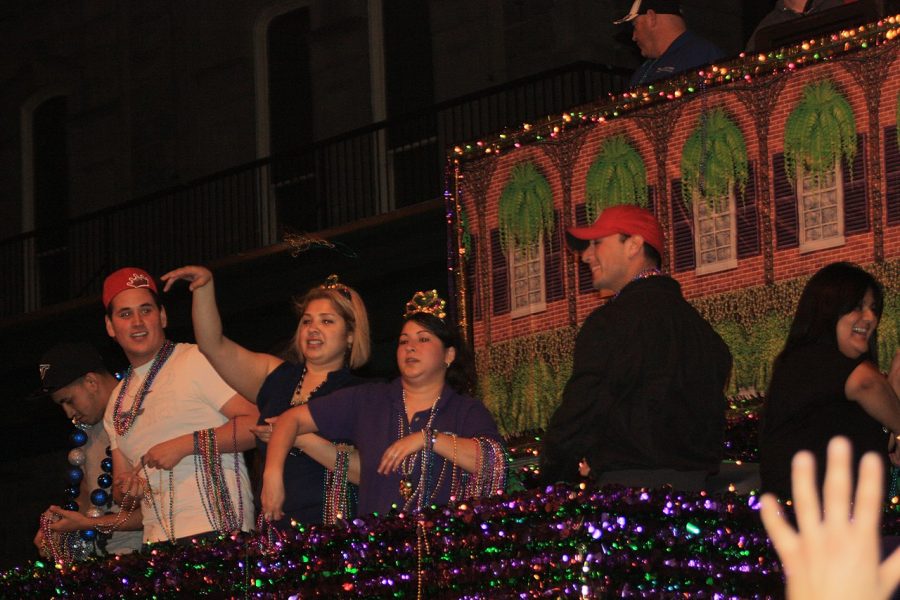History of Mardi Gras
A timeless tradition, celebrated all over the world.
People on a float during Mardi Gras in Texas immitating the traditions in New Orleans, Louisiana.
Mardi Gras!

A well known festival, it is also called Fat Tuesday, that lasts from Three Kings Day to the day before Ash Wednesday. It is said to have started in medieval Europe and become particularly popular with the French House of Bourbon.
Later, when parts of Louisiana were settled by French men, explorers decided to name the place they had settle
d Pointe du Mardi Gras, as they established themselves there on the holiday. The capital, Mobile, had the first Mardi Gras celebration in America. They also established a secret society, called Masque de la Mobile, which is known as a krewe today. A krewe is an organization that puts on a ball or a parade during the season. Krewes are often strict about who is allowed in, and are funded by the members.
In 1718, the city was first established and what we know as Mardi Gras was celebrated very differently than it is now. Rather than parades, big, elegant balls were held. Celebrations that were more like today’s carnivals didn’t begin until 1781. Throughout the 1800s, floats and displays became more complicated and complex. T
he Mistik Crewe of Comus was the first organization designated as a Krewe, created in 1856. This set the stage for other krewes to be formed, su

ch as the Twelfth Night Revelers in 1870. This group was also responsible for starting throws: small objects that are thrown into the parade crowd from the float. The most prized throws are known as signature throws, which can cause injury with many people’s excitement to get the prized items. It can even be dangerous to reach down to grab an item such as doubloons, because crowds at the parades can be mob-like.
The carnival becam
e such a well-known event that people started to make plans to attend every year. Newspapers began printing details in advance so people could make their travel arrangements. For forty years, Georges Soulie’ was responsible for all the floats using paper-mache from France. In 1872, the first parade during the day occurred; this was also the day that the official colors were chosen: purple, gold, and green. They were chosen in honor of the Russian Grand Duke’s family colors when he was visiting, but carry on with symbolic meaning as well. The color gold stands for wealth. The color green symbolizes faith. Purple stands for power.
In 1875, the Mardi Gras Act made the day a legal holiday for everyone living in Louisiana. Floats were all being made locally, and today there are many parades leading up to this day, rather than only on Fat Tuesday. Another newer addition to the tradition is that people have made costumes more creative. Costumes first became a thing during the Jim Crow times, when black men paraded down the streets wearing Native American outfits. They did this to show appreciation to the Native Americans who took in runaway slaves during the Civil War.
Mardi Gras is a timeless tradition that will keep evolving, as it has done over the centuries. One thing is certain to remain constant, however: it will remain a huge attraction for visitors, but above all bring Louisianans together.


